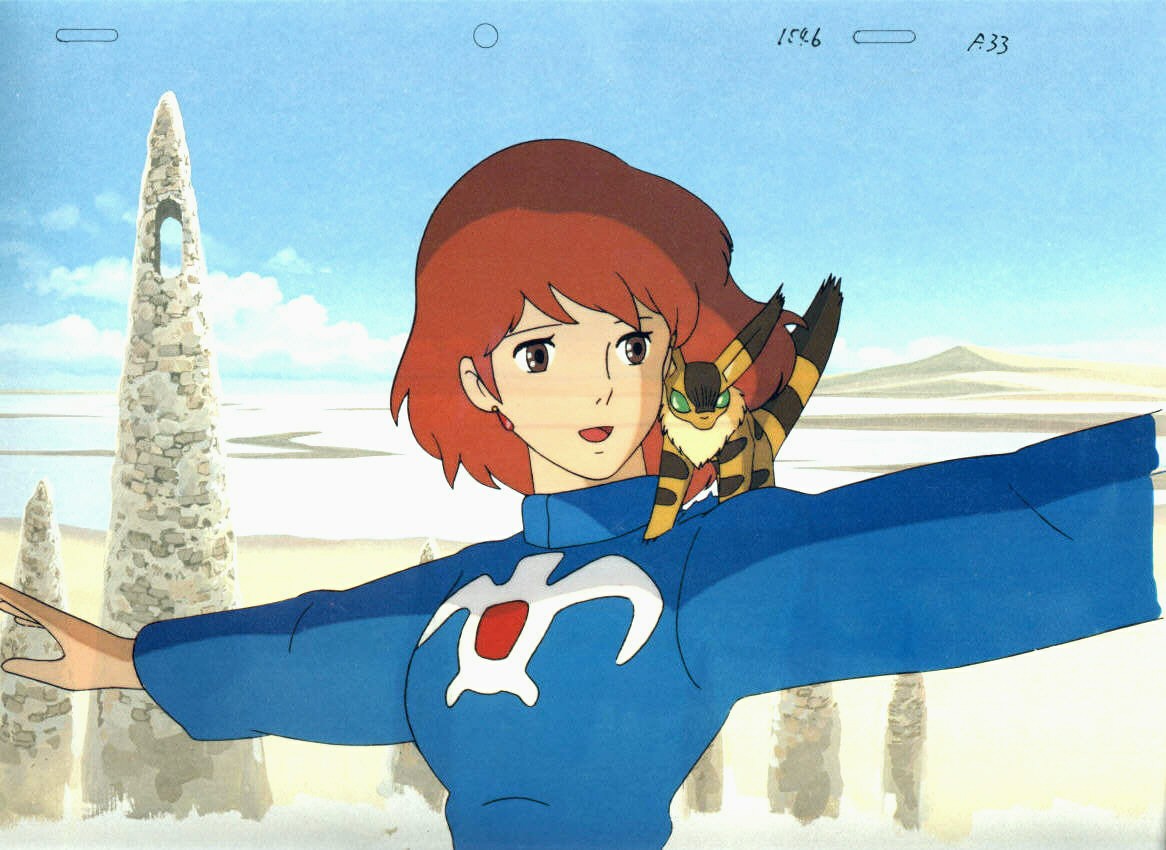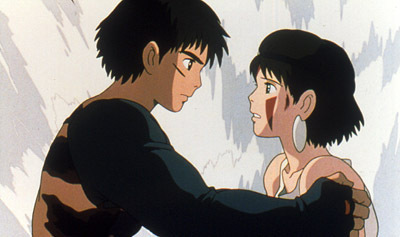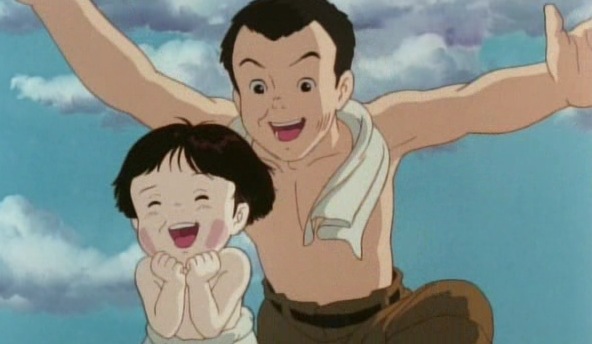Spirited Away is one of my absolute favorite movies. I brought my boyfriend to the screening with me and he admitted to thinking it was a really good movie. We ended up spending the whole drive back to Belle Chasse talking about it (he’s a film buff)! I’ll be honest, I love all of Hayao Miyazaki’s films. When I was younger I remember thinking ‘for cartoons, they are surprisingly deep.’ Miyazaki definitely let his imagination run wild with this film, and it leaves you wondering how someone comes up with all the ideas he does and how they fit perfectly with the idea he is trying to get across.
+3.jpg) In Spirited Away the main character is a young girl (a reoccuring item in Miyazaki films) named Chihiro. She seems like she gets a lot of what she wants and appears to be a brat but she is still a very likable character. Her parents are moving her to a new town, which she is obviously unhappy about, when they stumble upon a deserted ‘village’ with a ton of food. It gives Chihiro, and even the viewers, a very uneasy feeling. Her parents begin eating all of the food claiming that they’ll pay for it later, and end up turning into pigs. Chihiro, with the help of Haku and Lin, avoids being turned into a pig also and gets a job working in a bath house owned by the nasty, mean Yubaba. Yubaba takes peoples names, and gives them new ones and when they forget their old name, they never leave the spirit world. Chihiro, given the name Sin, ends up earning brownie points for cleaning a stink spirit at the bath house. The spirit gives her what looks like a rock, but is edible, as a present for her help. Sin, as nice as she is, lets in a seemingly friendly spirit by the name of No Face. The bath house makes him crazy and he begins eating people but with the rock, she gets him to throw up the food and leave.
In Spirited Away the main character is a young girl (a reoccuring item in Miyazaki films) named Chihiro. She seems like she gets a lot of what she wants and appears to be a brat but she is still a very likable character. Her parents are moving her to a new town, which she is obviously unhappy about, when they stumble upon a deserted ‘village’ with a ton of food. It gives Chihiro, and even the viewers, a very uneasy feeling. Her parents begin eating all of the food claiming that they’ll pay for it later, and end up turning into pigs. Chihiro, with the help of Haku and Lin, avoids being turned into a pig also and gets a job working in a bath house owned by the nasty, mean Yubaba. Yubaba takes peoples names, and gives them new ones and when they forget their old name, they never leave the spirit world. Chihiro, given the name Sin, ends up earning brownie points for cleaning a stink spirit at the bath house. The spirit gives her what looks like a rock, but is edible, as a present for her help. Sin, as nice as she is, lets in a seemingly friendly spirit by the name of No Face. The bath house makes him crazy and he begins eating people but with the rock, she gets him to throw up the food and leave. Sin begins to fall in love with Haku and goes on what could be a dangerous journey to save his life. He stole Yubaba’s twin sister, Zeniba’s, golden seal. She makes him throw it up and returns it to Zeniba. Haku goes to Zeniba’s and brings Sin back to the bath house. She answers Yubaba’s question and she allows her to leave with her parents not remembering a thing. Over the course of the movie, Chihiro is on a journey of self-discovery. She falls in love, frees Haku from Yubaba by telling him his real name (as he saved her from drowning when she was little and he was still alive) and telling him he used to be a river spirit for a river that is now apartment buildings. With her help, Yubaba’s baby becomes nice and starts to walk. There is so much to talk about with Spirited Away but I’m going to have to cut myself short because I’ve already written 500 words!













